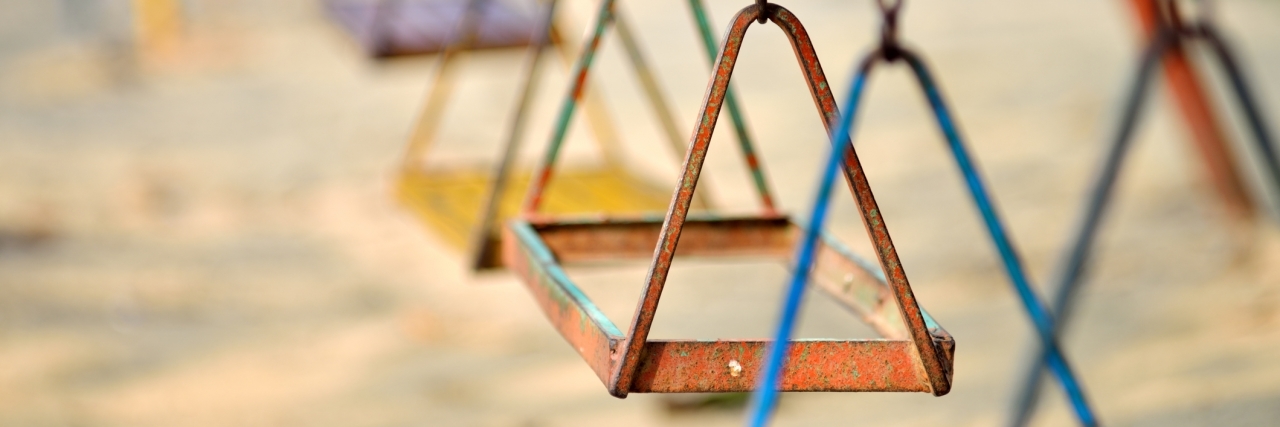“I’m in a swing.”
This is how I describe ascending into mania or falling into depression – a swing. Today, it is an upswing. I’m gradually rising to what I know will be a peak. It feels exhilarating, as I seem to leave my body on the ground behind me. My ideas are flowing, and boy are they good ideas. I want to reconnect with my previously frayed friendships, I want to write novels, travel the world, study every subject, and start 10 craft projects. I can conquer Rome overnight, seeing as how I’m not sleeping. But, today is actually when I need to be careful – when I need to stop the rush of everything. I need to jump off this ride before I get too high on the swing. The higher I let myself go into mania and suspend above reality for a time, the greater the crash will be when I come down from the high. The gravity of depression that follows an upswing will accelerate me down faster if I don’t jump off now.
• What is Bipolar disorder?
It’s difficult because I know when I jump off the swing, there will still be a small crash, as I shoot off onto the ground. But it is so much better than getting to the top and falling off. I have to remind myself of that. I have to look past the euphoria. I have to see the catastrophe that follows. I have to. If I don’t, the depression that follows will be just as great as the mania, just in the opposite direction.
I have learned to watch for the swings – both up and down. They are my red flags. When I feel my mind begin to fall or rise, I have learned to second guess myself. I question my ideas as they speed up, and on the flipside I question my thoughts as they turn bleak. Is depression making the world look dark? Is the ascension into mania turning bad ideas into good ones?
At first, this method of watching for triggers seems exhausting. It seems overbearing to have to ask yourself over and over again if you are looking at something with a level head, or if a swing is affecting how you see the world. Above all, it takes humility to question the validity of your own thoughts, and that is something not everyone is willing to do – even when they don’t have bipolar disorder.
But as time has gone on, and I have been able to recognize the swings earlier; their aftermath is much less profound, thus the recovery is easier. My psychiatrist says the less swings (episodes) I have, the less I will have in the future.
Jumping off the swing is tricky in itself, but it is doable. In my experience, to slow the bipolar high in its tracks, I need to practice calming methods for my brain. I try to sleep more, avoid caffeine, stay in a routine, sit still, practicing deep breathing, and talk about it with others – to name a few. All of this helps release me from the upswing I know will lead to disaster.
I have learned a manic swing – as good as it feels in the beginning – only leads to epic destruction in the end. If you can try to catch it early, if you can hop off the high before it reaches its peak, eventually you’ll stay on level ground most of the time. There will always be stressors and life factors that trigger the upswings or downswings, but sensing them before they pick up speed is a key component to addressing the episode, getting through it, and practicing skills that will help deal with the swings in the future.

